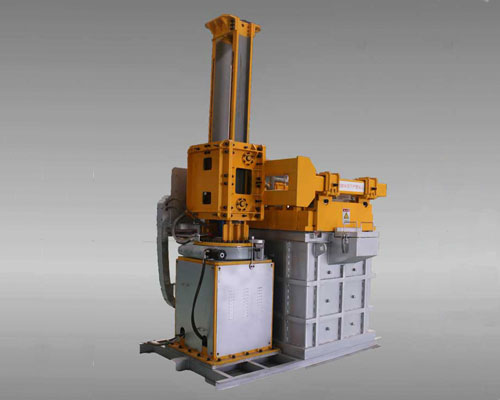In recent years, with the promotion of energy saving and environmental protection concepts, various vehicles have developed in the direction of lightweight. At present, most of the high-end cars and heavy-duty trucks have eliminated heavy steel wheels, and selected lighter weight aluminum forged wheels. Aluminum alloys for automobile wheels, whether used for casting or forging, belong to the A-Mg-Si series alloys, but the composition of aluminum alloys for forging is more complex than casting alloys. These alloys will inevitably produce non-metallic inclusions and inhale gas (mainly hydrogen) during the alloying process. Reducing and reducing the content of non-metallic inclusions and gas in aluminum alloy is one of the main processes in the aluminum alloy melting process. Aluminum Liquid Degassing Unit is mainly used for hydrogen removal in aluminum alloy casting process.
Most of the non-metallic inclusions produced in aluminum alloy production are oxides, and their melting points are higher than aluminum alloys. That is to say, it exists as a solid in the aluminum alloy melt, and its specific gravity varies, and some of it is close to the specific gravity of aluminum alloy. Therefore they will be suspended in the aluminum alloy melt. A large amount of hydrogen is generated during the melting of aluminum alloy. If the hydrogen generated during the melting of aluminum alloy is not treated in time, the hydrogen will be absorbed by the aluminum alloy solution. During the cooling process of the aluminum alloy solution, the solubility will continue to decrease, and the hydrogen in the melt will also continue to precipitate. When the hydrogen content in the aluminum alloy solution exceeds a certain density, some hydrogen bubbles that are too late to float will stay in the aluminum alloy melt to form micropores, which are commonly known as “pinholes”. The formation of “pinholes” not only affects the finish of the aluminum alloy forged surface, but also directly affects the strength and mechanical properties of aluminum alloy castings.

Whether the aluminum alloy contains inclusions of non-metallic substances and the amount of air content are important criteria for measuring the quality of aluminum alloy. At present, in the aluminum alloy smelting process, the method used to reduce non-metallic inclusions and gas content is mainly inert gas refining. That is, in the smelting process, inert gas is sprayed into the aluminum alloy melt. The inert gas will produce bubbles after contacting with the aluminum melt. Since the inert gas does not chemically react with aluminum, as the inert gas rises, the hydrogen and non-metallic inclusions in the aluminum melt will be carried out to reduce the aluminum alloy. Non-metallic substances and gases contained in the melt.
At present, in the aluminum alloy smelting production process, a rotor-type online aluminum liquid degassing unit is mainly used. The device uses a motor to drive a rotating shaft, the rotating shaft drives the blades to rotate, and inert gas is injected into the aluminum alloy melt through the rotating shaft. In this way, hydrogen can overflow from the aluminum alloy melt under the drive of the inert gas, thereby removing the hydrogen in the melt.

